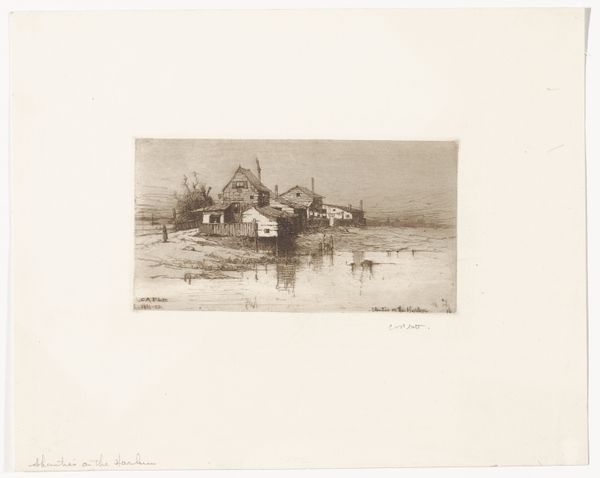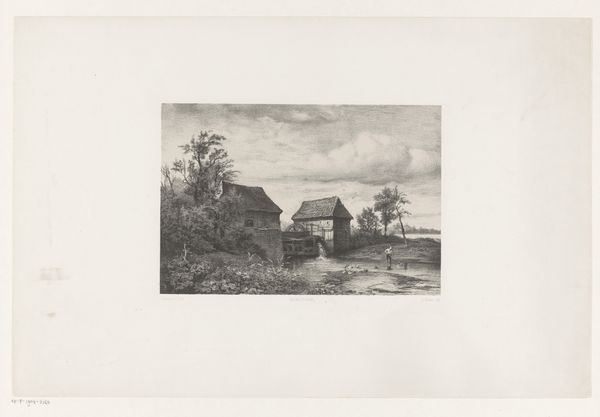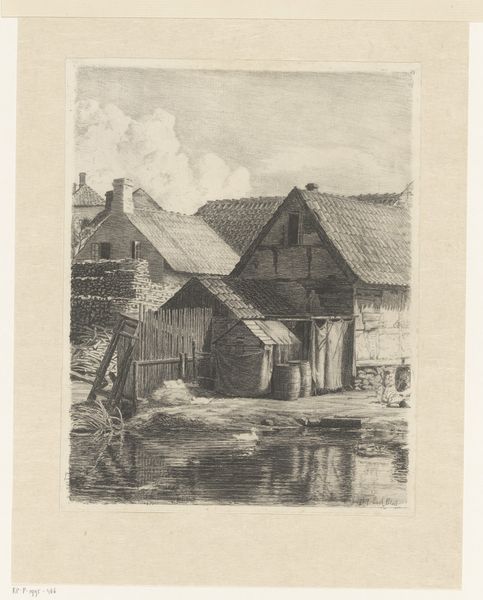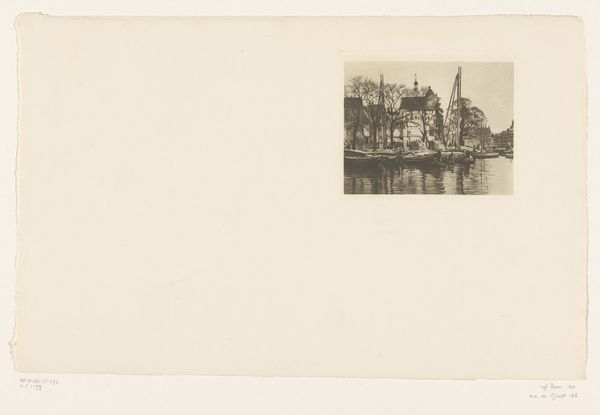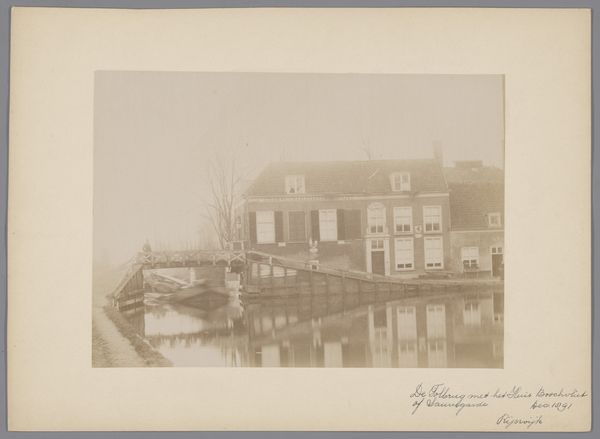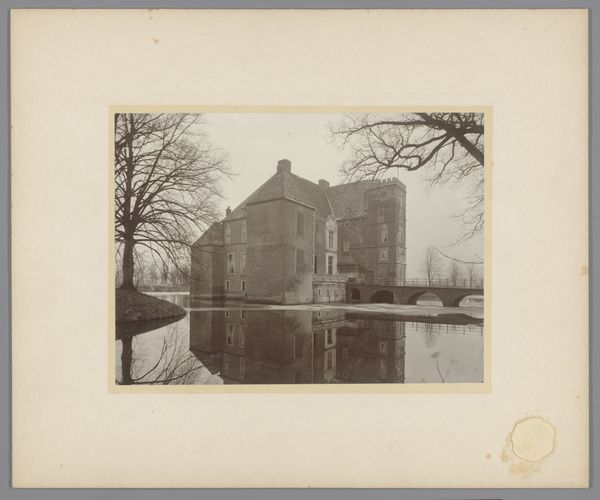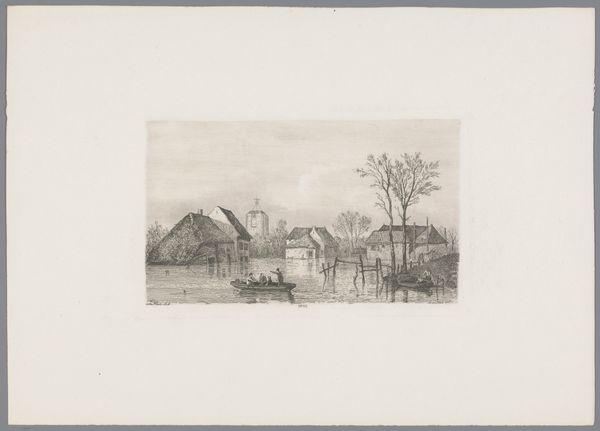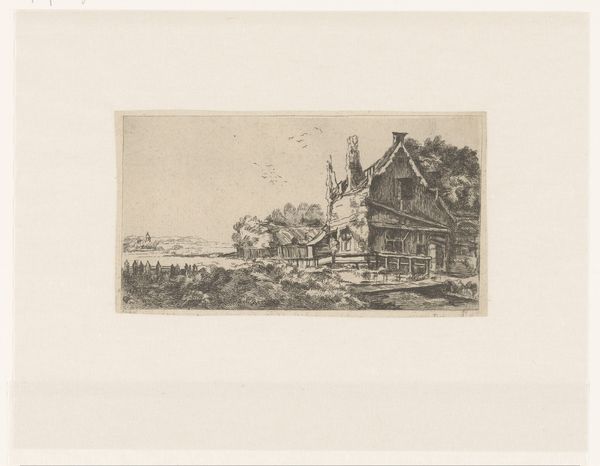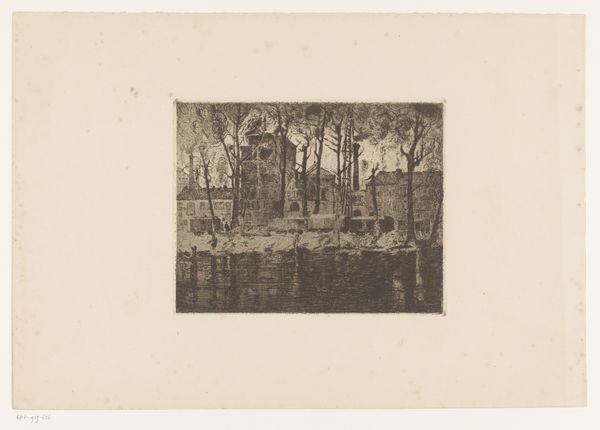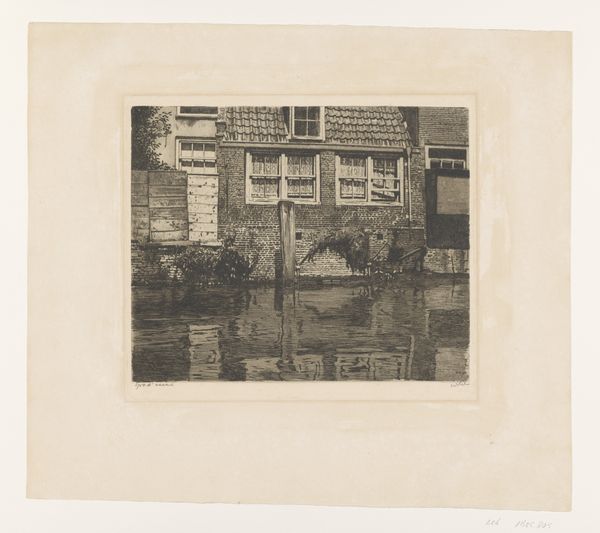
print, engraving
#
natural tone
# print
#
old engraving style
#
geometric
#
line
#
cityscape
#
engraving
#
realism
Dimensions: height 230 mm, width 248 mm
Copyright: Rijks Museum: Open Domain
Curator: This engraving, titled "Scheepswerf - Bickerseiland - A'dam," offers a detailed look at an Amsterdam shipyard. Karel Wetselaar created this piece in 2000. What’s your initial read? Editor: My first thought is the tranquility conveyed despite the industrial subject matter. The meticulous line work and tonal range give it a serene, almost dreamlike quality. There's a fascinating juxtaposition of the organic and geometric. Curator: Wetselaar's choice of the engraving medium is significant here. It allows for a level of detail that mirrors the detailed labor involved in shipbuilding itself. Consider how the act of engraving, of carefully carving into a plate, parallels the construction of the boats we see represented. Editor: Indeed. The lines themselves have a structural integrity, mimicking the very forms they depict: hulls of boats, the scaffolding, even the bricks of the buildings. Look at how he renders texture with such simple marks! The repetitive patterns almost abstract the industrial landscape. Curator: The social context is essential, too. Bickerseiland was, historically, a hub of shipbuilding, contributing significantly to Amsterdam's economic power. Wetselaar’s choice to depict it emphasizes the importance of this industry and the labor associated with it, at a time, in 2000, when that industry would have looked quite different. Editor: The tonal harmony, a symphony in sepia. I am particularly drawn to how light is captured – look how the sun gently glistens on the surface of the water. And that building; so massive in structure that its geometrical pattern almost pulls it toward abstraction. Curator: It really underscores how artistic processes can honor labor and industrial production, bridging that artificial divide we often construct between art and craft. The consumption of art then becomes, in its own way, an act of appreciation for the labor visualized here. Editor: Absolutely. It prompts one to think of how we extract formal elements and symbolic meaning. With careful examination, the detailed lines tell us not only about place but of change and the relationship to labor and landscape. Curator: It’s a powerful example of how seemingly simple materials and an age-old process can speak to both history and human endeavor. Editor: Agreed. It seems every look offers new layers of understanding – it’s certainly imprinted in my memory!
Comments
No comments
Be the first to comment and join the conversation on the ultimate creative platform.


